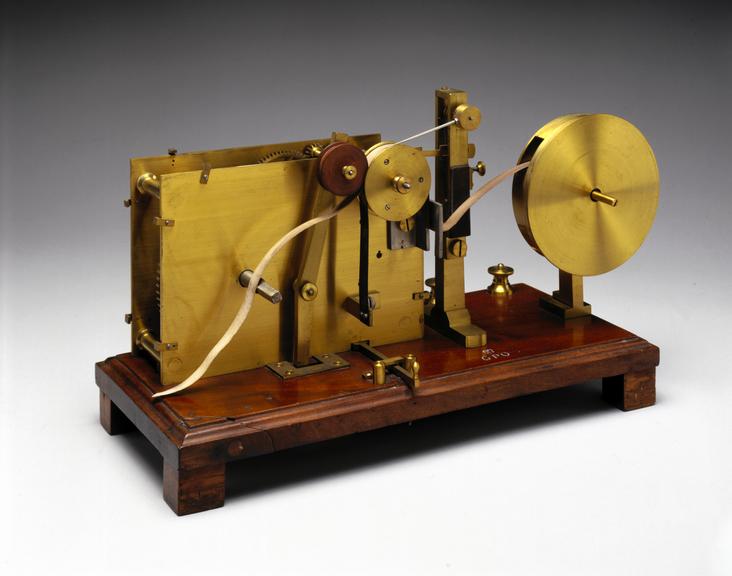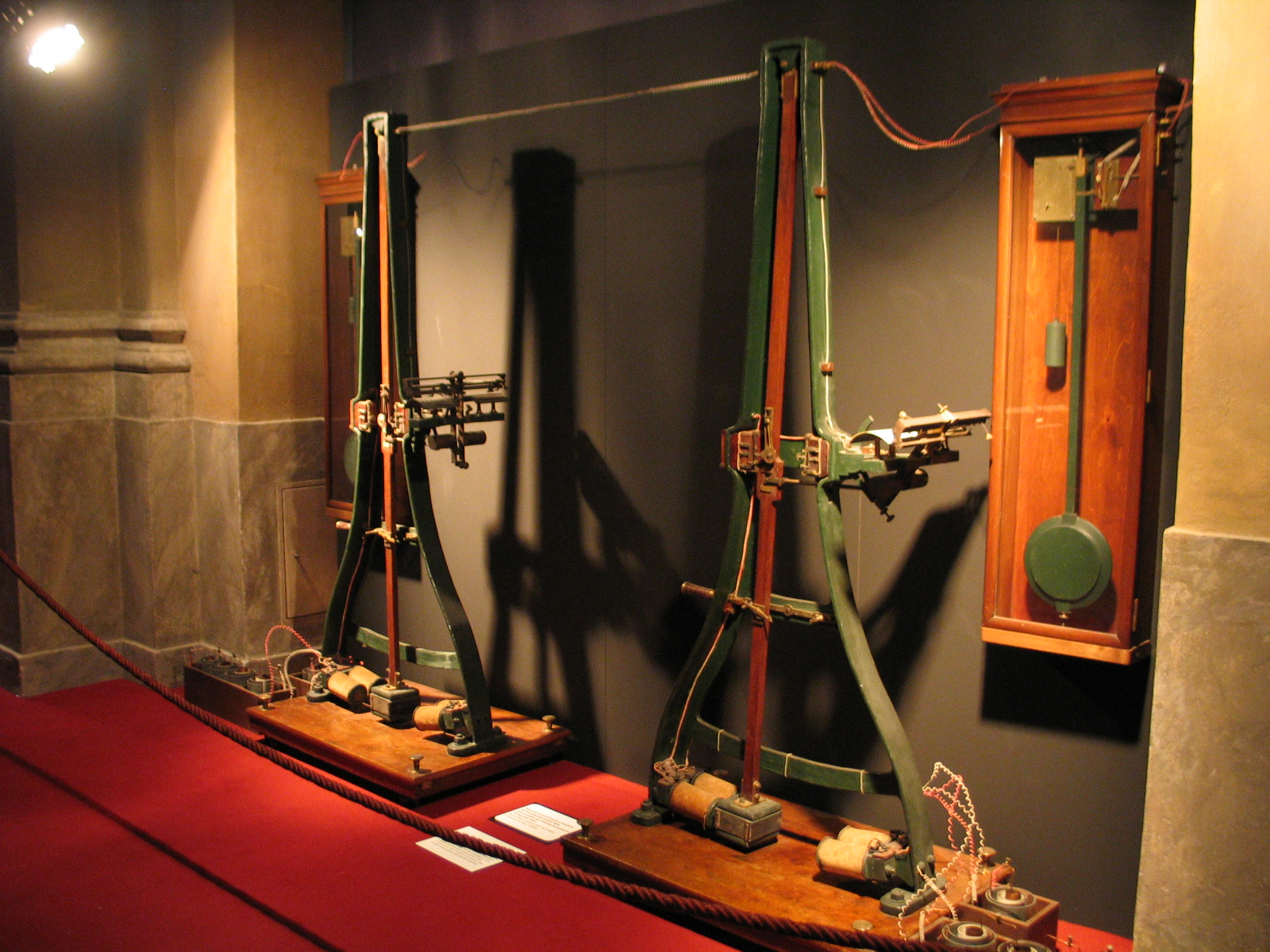I. Analog versus digital





Machine-loomed silk portrait of Joseph-Marie Jacquard, 1839 (24000 punchcards stored the data of the entire image which was produced exclusively on order)
II. Picture transmission
Early picture-transmission procedures are ancestors of the telefax:
– 1842-46 Alexander Bain (1811 – 1877) scottish engineer and inventor develops an experimental image transmitting telegraph

– 1851 Frederick Collier Bakewell (1800 – 1869) English physicist presents his improved picture-telegraph on the world expo in London



– 1856 Giovanni Caselli (1815 – 1891) italian physicist presents his picture transmitting system (the Pantelegraph)


The Pantelegraph used a regulating clock with a pendulum which made and broke the current for magnetizing its regulators, and ensured that the transmitter’s scanning stylus and the receiver’s writing stylus remained in step.
To provide a time base, a large pendulum was used weighing 8 kg (18 lb), mounted on a frame 2 m (6 ft 7 in) high. Two messages were written with insulating ink on two fixed metal plates; one plate was scanned as the pendulum moved to the right and the other as the pendulum moved to the left, so that two messages could be transmitted per cycle.
The receiving apparatus reproduced the transmitted image by means of paper impregnated with potassium ferricyanide, which darkened when an electric current passed through it from the synchronized stylus. In operation the Pantelegraph was relatively slow; a sheet of paper 111 mm × 27 mm, with about 25 handwritten words, took 108 seconds to transmit.
The most common use of the Pantelegraph was for signature verification in banking transactions.



– 1884 Jan. 3: Paul Gottlieb Nipkow (1860 – 1940) german inventor patents his picture scanning and transmitting system based on the spirally perforated rotating disk, the Nipkow-disk.

– 1889 L. Weiller describes the mirror-prism, a system of mirror elements spirally arranged around a shaft:



John Logie Baird 1928-ban presented his first color-television system, using a Nipkow disk divided into three parts(R,G,B).

In 1938 Baird constructed a color projector based on the same principles – instead of nipkow-disk it was using a mirror drum. http://www.earlytelevision.org/pdf/electronics_world_7-87.pdf
CBS developed a color television system with exceptional color fidelity, but due to its incompatibility with earlier black and white TV sets it did not become a standard.




